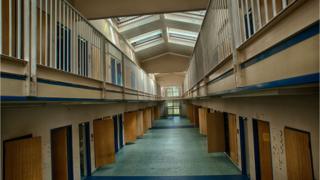
The now abandoned Blundeston Prison once held some of the UK"s most infamous prisoners. Among them were East End gangster Reggie Kray, shoe-bomber Richard Reid and "Lotto Lout" Michael Carroll. BBC News was granted a final look around before it is pulled down.
"It"s a place of wasted time," former guard, Paul Dunn, says poetically.
He has walked around the sprawling carcass of Blundeston Prison, near Lowestoft, in Suffolk, hundreds of times.
For him, the prison is neither a place of mystery, intrigue or excitement but of sadness, where countless hours of human life were spent in largely unproductive seclusion from the world beyond.

A deafening thud lingers in your ears a few seconds after you pass through the gloss blue wooden outer gate.
On the other side is a small courtyard where prison vans would stop to unload their human cargo.
"One of those is Reggie Kray"s old bed," Mr Dunn quips, pointing to a pair of prison beds placed to one side.
It is only after I"ve taken a photograph that I realise he was joking. It turns out the bed frames had actually been loaned out to a local theatre company.


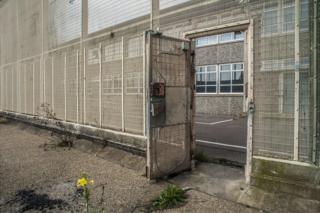
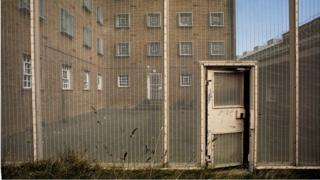

Opened in the early 1960s, HMP Blundeston was once home to up to 500 inmates but, since closing three years ago, is now being demolished to make way for housing.
Within months of its closure, nature decided to move in. Buddleia shoots from concrete cracks attracting butterflies to this most unlikely of sites.
Foliage and razor wire compete to glisten beneath the midday sun.
Beyond the all-weather sports pitch lies the prison"s medical block.
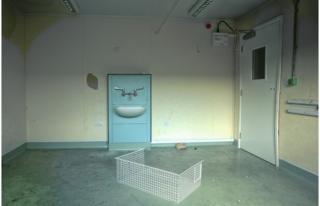
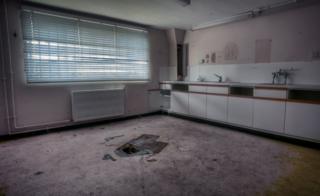
In the pinkish dental room there"s a gaping hole in the floor, from which a pipe pokes out. This is where the dentist"s chair once sat and, given they cost thousands of pounds each, it has been salvaged.
Head into the older wings of Blundeston and the light levels tumble, sounds echo and the temperature drops.
This is what comes to mind when people say "prison".
Cells here come in three flavours here - single bed, twin bed and four bed.
There are peep holes even into the toilets to help catch people abusing illicit drugs.


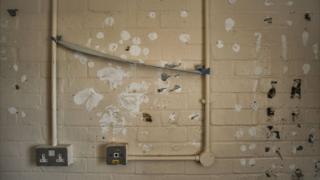
Many of the cell walls have peculiar blotches of black mould growing on them. Close up, the walls have a whiff of sweetness.
"They were not allowed Blu Tack," explains Graham Horton, who organises tours of the prison. "So they used toothpaste instead to put up pictures and posters."
The mould feeds on toothpaste. And while nearly all of the posters have been removed, a few fragments - where the paper has fused with the toothpaste - remain.
Most - you can tell by the abundance of healthy skin hues - were of naked or scantily clad women. But just occasionally you spot a drift of crayon - perhaps by a child, for dad.
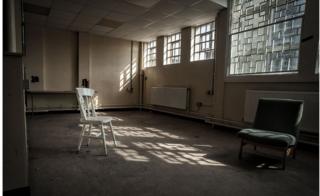
Mr Horton says the tours of Blundeston have been "brought to life" by the former prison guards who have volunteered to take about 1,000 people so far around.
But there have been a number of unusual requests for access too, he explains.
Paranormal groups have asked to spend time inside. As have engaged couples wanting to use the abandoned facility for weddings (not granted).
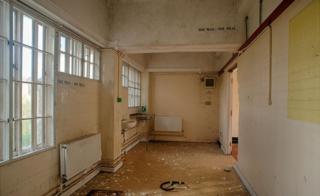
Many of the wings of the prison are littered with spent firearms shells.
These, and a peculiar cast of diminutive cardboard human targets, are remnants of police training exercises.
But for most visitors, the most popular cell is 116, where Reggie Kray was imprisoned in 1969 after receiving a life sentence for double murder at the Old Bailey.
 Image copyright Getty Images
Image copyright Getty Images 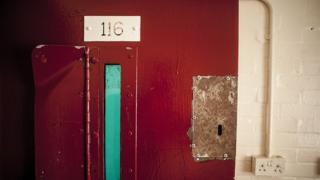
He and his twin brother Ronnie had controlled the most notorious criminal gang ever seen in Britain during the 1950s and 1960s and had a mafia-style grip on the East End of London.
Reggie Kray died in 2000 of bladder cancer.
"He came straight from the induction unit," says Mr Horton, "across to here (Cell 116) and this was his welcome to Blundeston".
The supporting lattice of the bed is not rubber but solid metal and the bed itself is bolted to the blood-red vinyl floor.

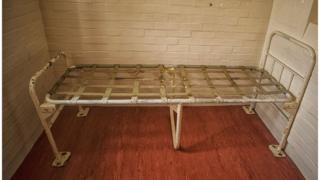
After Blundeston, Kray was incarcerated at Maidstone Prison in 1994 and later at Norfolk"s Wayland Prison.
And while his cell might be the top draw of Blundeston, it is the solitary wing which is the most unnerving.
These cells are stand-alone units within a secluded wing. There"s a gap of about 3ft (1m) between the wall of the wing and the wall of the solitary cell.
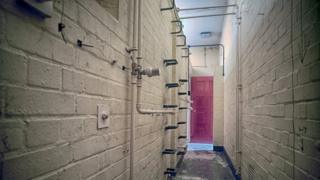

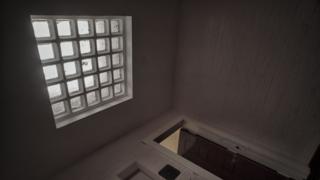
Outside the solitary cells, cast iron ladders rise up and over the cell towards a viewing hole on the roof of the cell.
The reason for these roof viewing holes, Mr Horton explains, is that prisoners were known to smear excrement over the eye-level viewing holes.
There are no switches on the walls or light fittings above. The only light in solitary comes from a window above the bed, which is built into the floor.
When the sun goes down, the cell descends into darkness.
Blundeston has the power to depress, but it can also surprise. There is one wing where large works of art adorn the walls.
They are not hung up, but painted (even the "frames" are painted) directly on to the wall"s surface.


And then there"s the church, complete with organ and pipes.
It sits on the third floor and its history is one of both spiritual and physical escape.
One inmate, realising that the security grilles had been recently welded (which weakens the metal, Mr Horton tells us), hid until the end of the service.
He managed to pull the grille back far enough to escape out on to the roof of the prison.
The security grilles of the third-floor church were taken down and remade.
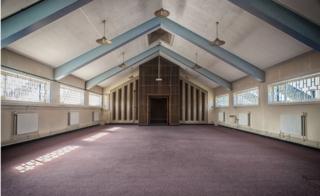
While many of those at HMP Blundeston may have dreamed of breaking out, in recent weeks it has been targeted by people wanting to break in.
A group of suspected teenagers managed to force their way through an outer door only to find themselves confronted with a 10ft (3m) wrought iron security gate.
They then tried to smash through a security window, without success.
"If they"d only given a few quid to charity," Mr Dunn points out, "they could have had a guided tour of the place."
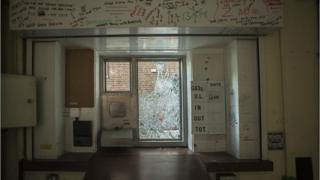
- The last tour of Blundeston takes place on 15 and 16 October.

No comments:
Post a Comment